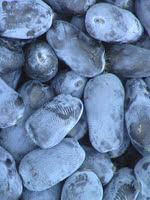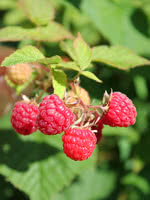Mon-Fri 9am - 5pm Mountain time
Indigo Treat Haskap (Honeyberry) vs Nova Raspberry
Lonicera caerulea Indigo Treat
Rubus x Nova
NOT AVAILABLE THIS SEASON - MIGHT RETURN
NOT AVAILABLE THIS SEASON - MIGHT RETURN
Indigo Treat has fruit similar in size and firmness to their Tundra variety, making it suitable for commercial production or your home garden.
Indigo Treat, like the Borealis Haskap, does not self-pollinate well. We recommend another variety, such as Honeybee or Berry Blue Honeyberry, be planted at a minimum 1:8 ratio with it to boost fruit production. Many experts suggest the highest Haskap yield comes from fields planted with the most varieties.
Due to stronger interest in newer cultivars, 2015 will be our last year selling Indigo Treat.
Taste is the reason people buy the Nova Raspberry.
Nova canes have very few spines. As it has a firmer berry, it is commonly planted for commercial plantings where a harvester is used.
The Nova Raspberry gets its name from where it was bred, in Nova Scotia. It was created to survive and thrive in the varying climates of Canada.
The Nova Raspberry is a fast-growing floricane. This means that raspberries will not grow on canes the year they first grow. The mature canes they do grow on, however, produce more berries than primocane varieties.

